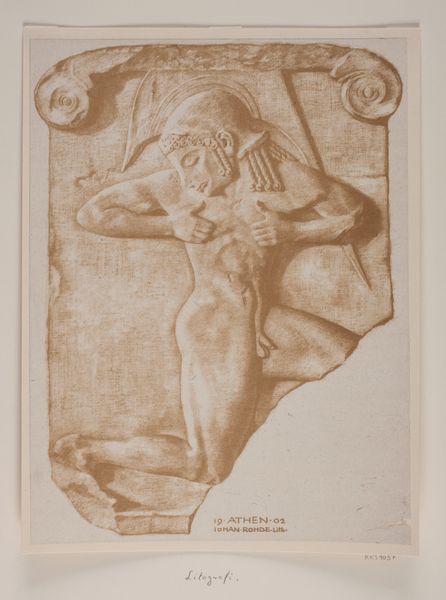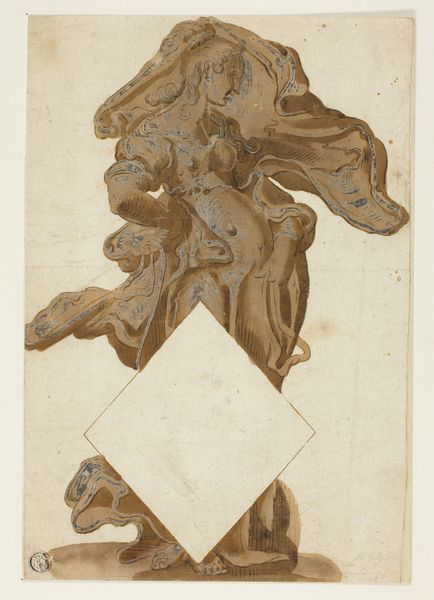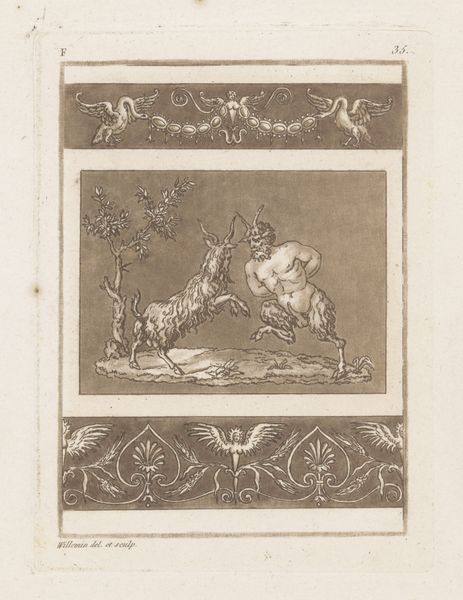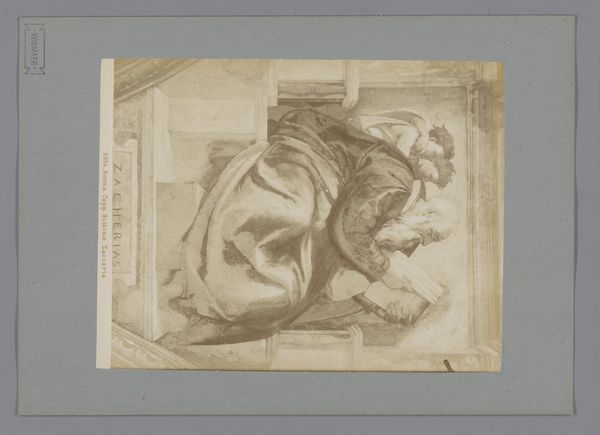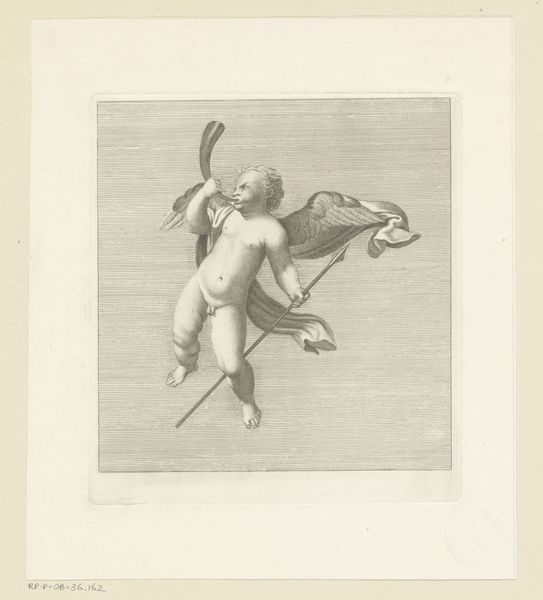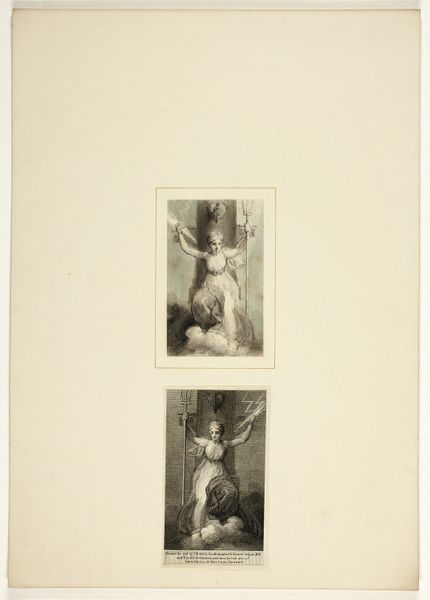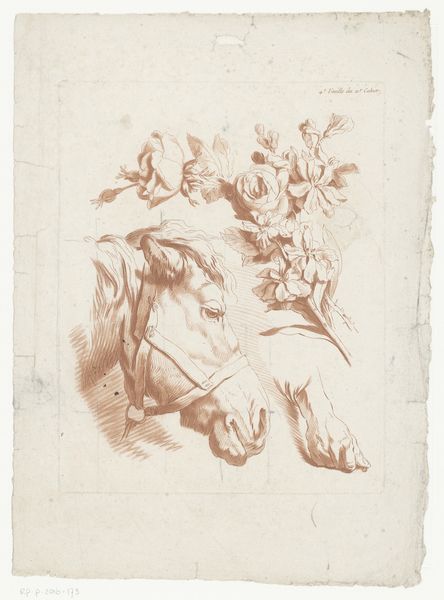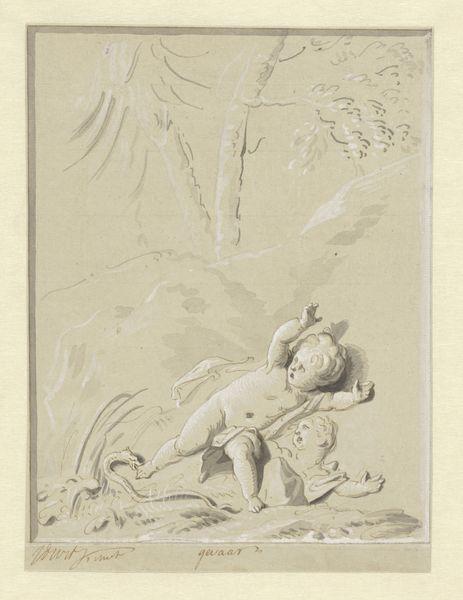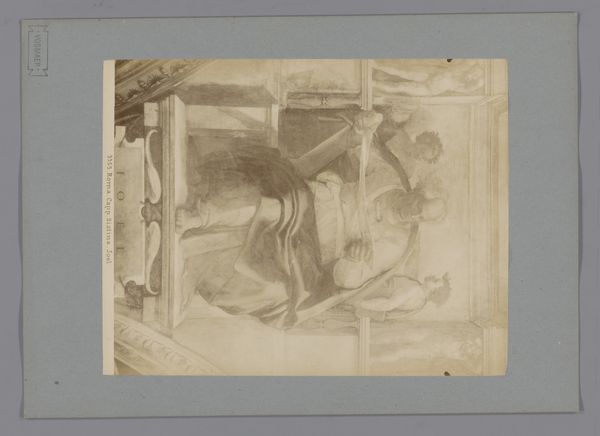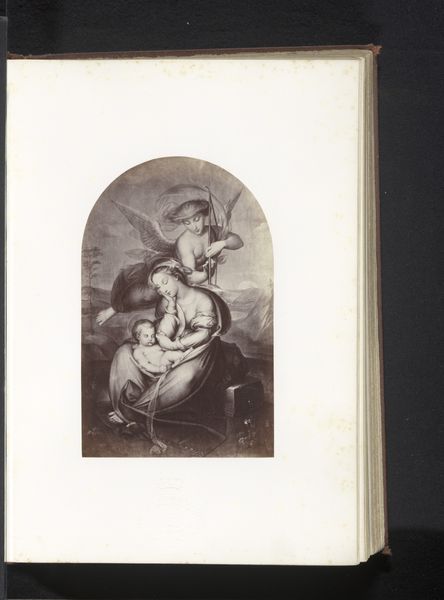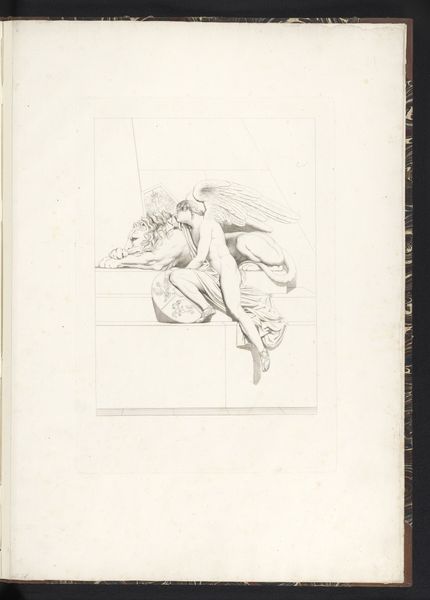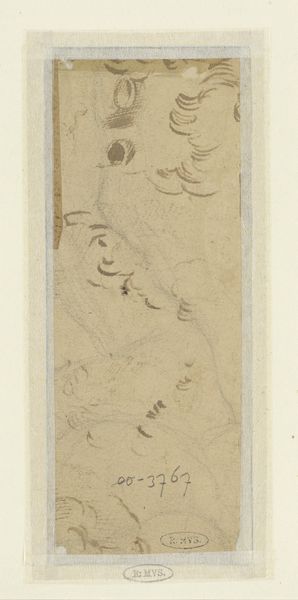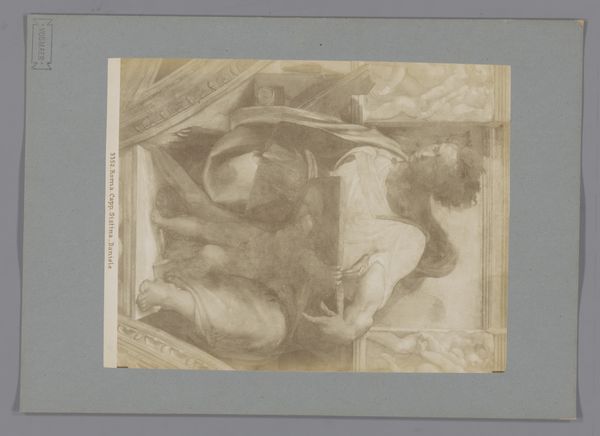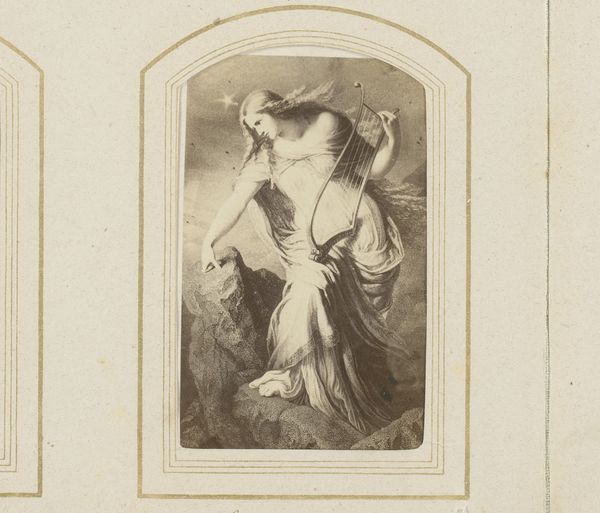
Dimensions: height 165 mm, width 102 mm
Copyright: Rijks Museum: Open Domain
Editor: Here we have Hermann Krone's photograph, "Afgietsel van Amor op een doorlopende panter van Ernst Rietschel," dating from between 1850 and 1900. It depicts a plaster cast of a sculpture—Cupid riding a panther. It's a curious image, both romantic and somewhat unsettling. What do you see in this piece? Curator: It's more than just a romantic depiction, isn't it? Consider the era, the mid-19th century. This image encapsulates the tension between Neoclassical ideals and emerging Romantic sensibilities. A plaster cast photographed...it's a copy of a copy. Think about power structures, who gets to create, who gets to disseminate, and whose narratives are being circulated. Who controlled access to this art and, more importantly, what ideological work was this image meant to do? Editor: I see what you mean. It's not just about the aesthetic beauty, but the social context that produced and consumed it. The plaster cast itself democratized art by making it more accessible, right? Curator: Exactly, and the photograph even more so. But democratisation can be deceptive. Who benefited most? The burgeoning middle class sought cultural capital. What values did these classical forms reinforce? Think about imperialism, the appropriation of classical motifs to justify dominance, the subjugation of other cultures. Does Cupid taming the panther become a metaphor for something more sinister when viewed through that lens? Editor: So, by photographing and distributing this image, Krone isn't just presenting a pretty picture, but participating in a larger cultural project. It’s an object lesson in the complicated relationship between art, power, and ideology. Curator: Precisely! And examining those intersections gives us a far richer understanding. Editor: Definitely. I'll never look at Cupid and a panther the same way again. Thanks for making me rethink my initial assumptions.
Comments
No comments
Be the first to comment and join the conversation on the ultimate creative platform.
